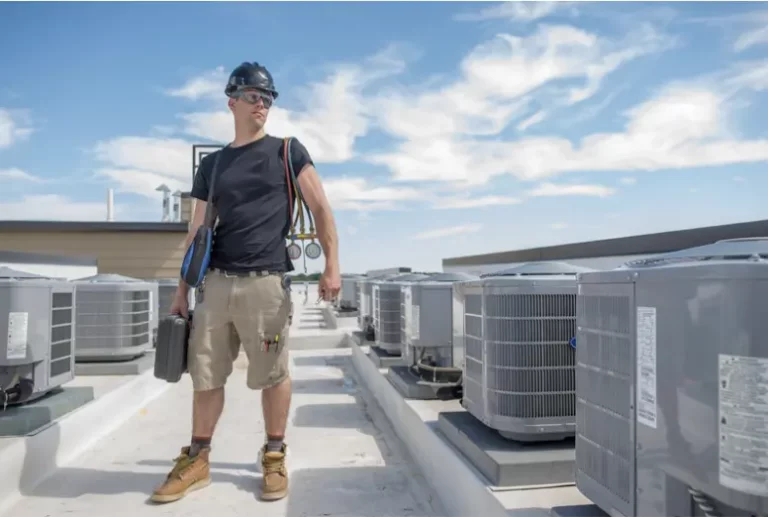“Efficiency is doing things right; effectiveness is doing the right things.”
Peter Drucker
In the management of large facilities, such as commercial buildings, hospitals, and universities, the heating, ventilation, and air conditioning (HVAC) systems are critical for maintaining a comfortable and safe environment. Predictive maintenance AI is increasingly used to ensure these systems operate efficiently and reliably. This article examines how predictive maintenance AI is transforming HVAC system management in large facilities, backed by industry data and case studies.
Importance of HVAC System Maintenance in Large Facilities
HVAC systems in large facilities represent a significant portion of operational costs, and their efficiency directly impacts energy consumption and environmental comfort. Predictive maintenance AI helps facility managers optimize these systems to reduce costs and enhance system reliability.

Industry Insights:
- According to the U.S. Energy Information Administration, HVAC systems account for about 35-40% of the electricity used in commercial buildings.
- A study by the Building Services Research and Information Association (BSRIA) suggests that predictive maintenance can reduce the overall maintenance costs of HVAC systems by up to 20% and extend their lifespan by 35%.
Real-World Application:
- A prominent university implemented predictive maintenance AI across its campus HVAC systems. The AI tools monitor various performance metrics and predict potential failures, allowing maintenance teams to address issues proactively, thus avoiding disruptions and reducing energy waste.
How Predictive Maintenance AI Enhances HVAC System Management

Early Fault Detection: Predictive maintenance AI employs sensors and machine learning algorithms to continuously monitor the performance of HVAC components, such as compressors, fans, and filters. By detecting anomalies that may indicate impending failures, maintenance can be scheduled before significant problems arise.
Optimization of Energy Usage: AI-driven systems analyze usage patterns and environmental data to optimize the operation of HVAC units, adjusting settings in real-time to improve energy efficiency. This proactive adjustment not only reduces energy consumption but also ensures consistent environmental conditions.
Reduction in Downtime and Repair Costs: By maintaining HVAC equipment proactively, predictive maintenance AI helps avoid unplanned downtime, which can be costly in terms of both repairs and the impact on building occupants. Regular, targeted maintenance extends the life of the equipment and improves its efficiency.
Challenges in Implementing Predictive Maintenance AI for HVAC Systems
Integration with Legacy Systems: Many large facilities operate with older HVAC systems that may not initially support AI integration. Retrofitting these systems with the necessary sensors and connectivity can require significant upfront investment.
Data Management Complexity: Effective predictive maintenance relies on the integration and analysis of large volumes of data from diverse sources. Managing this data effectively requires robust data analytics capabilities and potentially significant upgrades to existing IT infrastructure.
Training and User Adoption: Implementing new technologies such as predictive maintenance AI requires buy-in from facility management teams. Adequate training and demonstration of value are essential to ensure user adoption and effective use of the technology.
PeakMet’s Role in Enhancing HVAC System Efficiency
Customized Predictive Maintenance Solutions: PeakMet offers predictive maintenance solutions tailored for the specific needs of large facilities’ HVAC systems. These solutions are designed to integrate seamlessly with existing systems, providing real-time monitoring and predictive analytics.
Advanced Analytics for Energy Optimization: PeakMet provides sophisticated analytics tools that help facility managers understand energy usage patterns and identify opportunities for efficiency improvements. These tools support decision-making that leads to cost savings and enhanced system performance.

Ongoing Support and System Upgrades: Understanding that facility needs evolve, PeakMet commits to providing continuous support and regular updates to its AI systems, ensuring they remain effective as new technologies and standards emerge.
In conclusion, predictive maintenance AI is a transformative tool for managing HVAC systems in large facilities, offering significant benefits in terms of energy efficiency, system reliability, and cost savings. By leveraging AI-driven insights to predict and prevent potential system failures, facility managers can ensure optimal performance and comfort, leading to more sustainable and cost-effective operations. With technologies like those from PeakMet, the path to smarter, more responsive facility management is clearer than ever.


